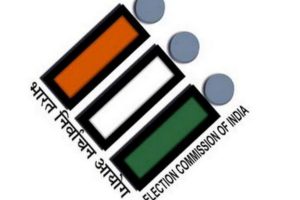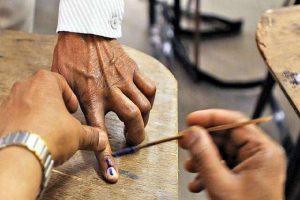The computer chip industry is an immensely complex chain that forms a half trillion-dollar (Rs 37.4 lakh crore) ecosystem with thousands of companies globally. Yet only a handful of facilities build these chips, used from mobile phones to satellites. These fabrication foundries, or ‘fabs’ are linchpins of the semiconductor industry, and are in renewed focus as the world grapples with a severe chip shortage.
As India seeks to become an ‘Aatmanirbhar’, $5 trillion economy, where can it fit in this picture? Much like building a skyscraper, chip design and manufacture has many steps. Today, there exists an entire ecosystem of ‘fabless’ companies, which make and sell chips without having their own manufacturing fabs. India’s chip design capability is unbeatable; every chip design company in the world has the imprint of an Indian hand.
However, much of the fab and post-fab work is done in facilities in East and Southeast Asia. Without its own fab, India depends on US, Taiwan, and Southeast Asian countries to make its chips, including those used in critical areas such as defense, space, railways, and finance. “Once we send the chips out for fab, we have to share our designs. It no longer remains your IP. The security risk is always there”, says a senior DRDO scientist.
The message is piquantly relevant. India should have had its own semiconductor fab decades ago. In 1987, India was just two years behind the latest chip manufacturing technology. Today, we are 12 generations behind. Our semiconductor dream has been sabotaged by red tape, lack of infrastructure, bureaucratic lethargy, corruption, and a lack of visionary leadership. We have missed the bus several times, for reasons that are unpardonable.
In the 1960s, at the beginning of the silicon revolution, Fairchild Semiconductor considered building a fab here, but bureaucratic lethargy chased them away to Malaysia. After the 1962 war, Bharat Electronics Ltd. set up a fab to manufacture silicon and germanium transistors. “Our silicon transistors were in such demand that companies would queue up to place orders”, says N. Ravindra, retired Senior DGM. BEL.
When cheaper integrated circuits (ICs) from China, Taiwan, and South Korea entered the market, BEL couldn’t match global quality and price standards, and many of the fab units had to be shut down. In the mid-1980s, IISc professor A.R. Vasudeva Murthy helped establish Metkem Silicon Limited which, in partnership with Bharat Electronics Limited (BEL), produced polysilicon wafers for solar cells and electronics. This could have catalyzed an electronics revolution in India.
Unfortunately, without governmental support, especially the promised supply of subsidised electricity, Metkem couldn’t produce high quality polysilicon wafers. In the 1990s, another visionary, E.S. Ramamurthy ventured to grow silicon in BHEL. “Growing silicon demands tremendous infrastructure, one of them being a zero-shake environment. We had a railway track running beside the factory. We’d work all night when the trains wouldn’t run. We had the talent and commitment, but we did not get the support from the parent body.
People did not adhere to the protocols required for entering the clean room. How can any innovation succeed in such an environment? We had to abandon the project”, narrates S.K. Premchandran, former AGM, BHEL. The most tragic story is that of Semiconductor Complex Ltd. (SCL), Chandigarh. Starting with a 5000 nm process in 1984, SCL rapidly advanced to the 800 nm technology, which was the cutting edge only a year or two before. At that time China and Taiwan had not even entered the fab space. Intriguingly, the entire complex was gutted in a devastating fire in 1989, and our semiconductor progress was set back by a decade. ISRO revived SCL and used it for low volume manufacture of chips for its programs, but it is only a shadow of what it could have been.
DRDO’s fabrication and packaging units, GAETEC, STARC, and SITAR were set up for strategic use by Defence and ISRO. “Unless fab is made on a large scale it’s not economical. There is no state-of-the-art fab for high-end, commercial semiconductors. I ran SITAR (Society for Integrated Circuit Technology & Applied Research) for 20 years, it was hell of a problem. Equipment was imported and each time there was a failure we had to depend on experts from abroad. We made just 5,000- 10,000 chips per year”, says Dr. K.D. Nayak, former Director-General DRDO.
In mid-2005, a major multinational semiconductor company started operations in South India, hired seasoned experts, and set up a class100 cleanroom for checking impurities of semiconductors. Facing roadblocks at each step, the endeavor became a stillborn child. Equipment imported from the US was stuck at the port for several months. Leave alone any concessions, they were levied heavy import duties and had to pay huge sums as demurrage. Several trips to South Block to convince the government did nothing to move the bureaucratic needle.
Eventually, the equipment left India without touching its soil. China grabbed this opportunity and welcomed the project, giving the company everything it needed. India not only lost a good semiconductor facility, but also gave away 4000 jobs to China. Another multinational semiconductor company in the process of setting up their fab here withdrew after seeing the horrific experience of this MNC.
As for the cleanroom, it was sold as scrap. Dr. Manmohan Singh’s government allocated Rs. 39,000 crore in 2012-13 to build two fabs. JP group, along with IBM and HSMC bid for it. The Gujarat government readily offered all the infrastructure and allocated 300 acres land around Gandhinagar. Unfortunately, HSMC could not assure their investors an encouraging market in India, and the bidders withdrew. An earlier plan in 2005 for an impressive 200-acre fab city outside Hyderabad, which would have created an ecosystem for fab and other semiconductor companies failed miserably. The land allocated then became a lucrative real estate deal.
“There was no vision, there was no political will to support, infrastructure was absent and there was no market to promise investors”, say experts. How will India now optimize the opportunity that stands before her? “Building a fab takes years and costs billions of dollars. We have to learn from our past mistakes. Ease of doing business is most critical now”, says Lakshminarayanan, veteran HR leader with experience in Hitech MNCs.
“Every ten years, there is a fab cycle and if we miss it now, we will miss it for the next ten years”, cautions Uma Mahesh, co-founder of Innatera. “This is a mammoth business, technology changes fast. Intel was almost catching up on everything till 14 nm and they couldn’t get to 10 nm fast enough. TSMC overtook Intel and announced their 7 nm chip. Soon they will be ready with their 5 nm and 3 nm chips. In the semiconductor business speed matters, we must drive our R&D aggressively. Partnering with academia and a relook at the curriculum in our technical institutions is important”, says Shiv Turmari, semiconductor expert and consultant.
Governmental support is vital. US has offered $25 billion to TSMC to set up a fab in Arizona and proposed $52 bn in funding through the CHIPS Act to subsidize companies to make their chips in the US. Chip shortage, global pandemic, supply chain issues, and geopolitical tensions in Taiwan have made an alternative fab location an attractive proposition. India must seize this opportunity to reenter the chip manufacturing game. In December 2021, the Indian government announced a funding of Rs 2,30,000 crore ($30.7 billion) towards semiconductor manufacturing, aiming to position India as a global hub for electronics manufacturing. Now, semiconductor experts are upbeat.
“The dynamics have changed. Our economy is fairly mature. The time is ripe for India to join the semicon revolution and have its own fab”, opines Dr. Nayak. “None of the East Asian countries have the kind of talent that India has. The seeds of excellence are here, we have the muscle. If we create chips in India, the entire geographic area of Taiwan can be our chip factory. That is the kind of scale we have”, says Lakshminarayanan. Today, India can confidently offer quality electricity, water, better roads and infrastructure. The government has announced incentive schemes for electronics manufacturing (PLRI) to attract investors and start-ups.
“Four well thought of schemes were announced in December, giving a push for ‘make in India’, laying out a red carpet to investors. MeitY (Ministry of Electronics and Information Technology) secretaries are personally in discussion with anyone who shows interest. I’m seeing a very positive environment to attract industry” says Sanjeev Keskar, semiconductor veteran and CEO, Arvind Consultants.
Many nations, including India, are wooing TSMC, the largest chip manufacturer. Reports suggest that TSMC might partner with Tata Group to set up a fab in India, with the possible involvement of Raja Manickam, founder-CEO of Tessolve. “We must create an ecosystem for TSMC to want to come to India. Tatas carry the stamp of credibility; the world trusts them. TSMC partnering with Tatas is the best thing that could happen”, says Uma Mahesh. “In my 35 years of being in DRDO, this is the first time I’m seeing a policy from the government towards the semiconductor industry. This also needs political stability, in the next few decades whichever government that comes in, they must handhold the industry and make it succeed”, says Dr. M. U. Sharma, former Director, SSPL.
The onus is on MeitY now. With Taiwan not being recognized as an independent country and China threatening to invade in the coming years, India must quickly work towards bringing TSMC on board. The dream of India becoming the hub for semiconductor manufacture is near. It is time to secure all fronts and set sail.
As I was writing this story, my domestic help, 25-year-old Tara, a primary school dropout, would watch the laptop screen with interest. Seeing her curiosity, I explained to her the basic chip manufacture process by showing her some visuals. A quick learner, her immediate question stumped me, “yeh sab India me kyu nahi banathe hai”. That’s the question which has made India arrive today; this is India’s moment to capture.
(The writer is an independent journalist.)











